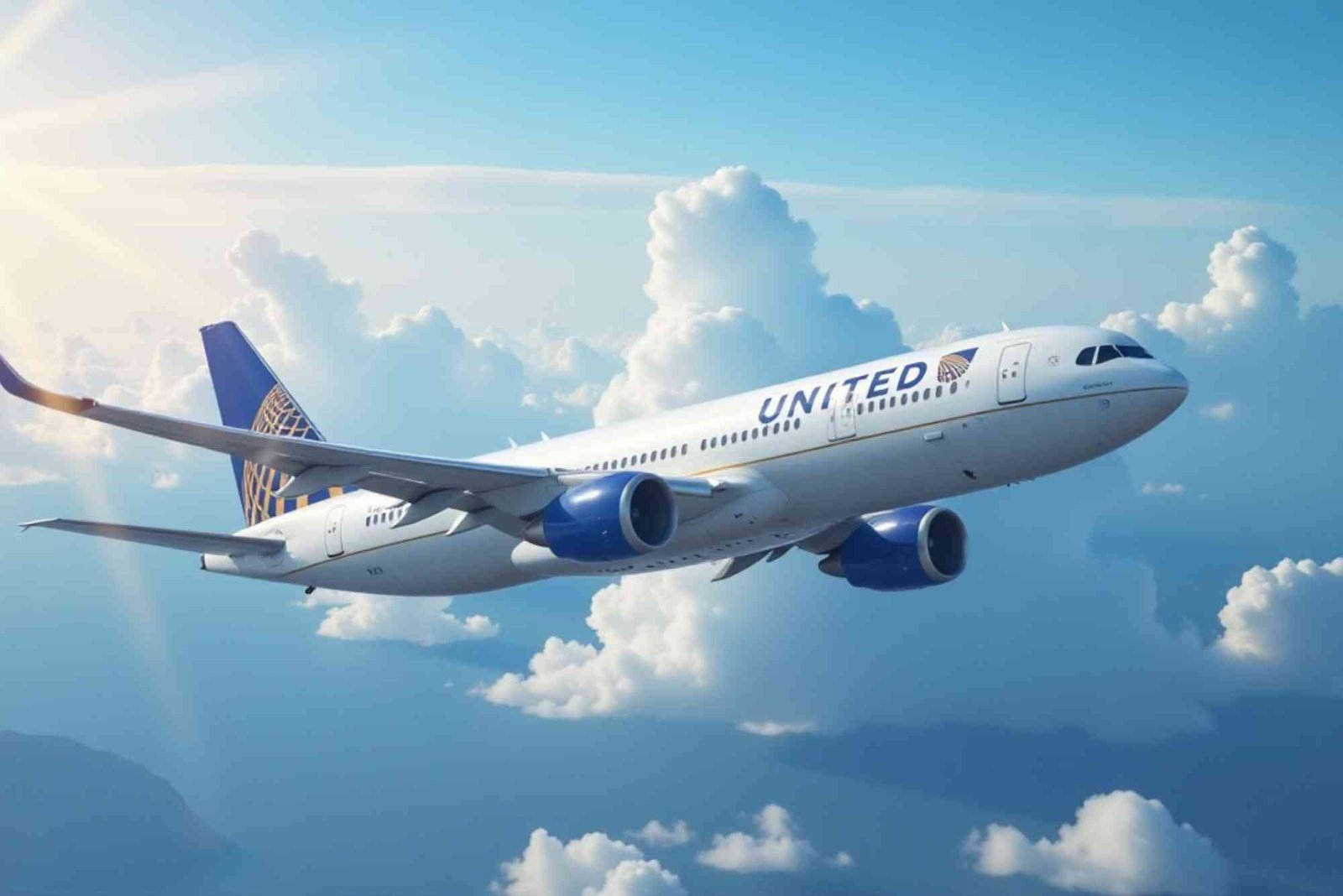Introduction
The United Airlines stock price is a vital indicator for investors interested in the airline industry’s recovery and long-term growth potential. As one of the largest global carriers, United Airlines Holdings, Inc. (NASDAQ: UAL) reflects broader travel trends, economic shifts, and operational efficiency. Understanding what drives the price can help you make smarter investment decisions and assess whether UAL deserves a spot in your portfolio.
The United Airlines stock price captures the market’s view of how well the company can navigate travel demand, costs, and competition. Since the post-pandemic recovery began, airline stocks have drawn renewed attention, with investors looking for opportunities in cyclical rebounds. United Airlines, in particular, has shown resilience and strategic growth, though it still faces challenges such as fuel volatility and economic uncertainty.
United Airlines Stock Price Overview
Current Market Performance
As of recent data, the United Airlines stock price trades around the mid-$90 range. Over the past 52 weeks, it has fluctuated significantly—ranging from approximately $52 to $116 per share. This wide range demonstrates how sensitive the airline industry is to fuel costs, passenger demand, and macroeconomic shifts.
Historical Perspective
United Airlines’ stock has endured turbulence over the years, including the COVID-19 pandemic’s deep impact on travel. However, the company’s strong recovery since then has proven its ability to adapt. With passenger volumes rebounding, particularly in international and premium segments, investors have regained confidence in United’s long-term prospects.
Analyst Forecasts and Market Sentiment
Analyst Price Targets
Most analysts remain optimistic about UAL’s outlook. The consensus target for the United Airlines stock price is around $120–$125 per share over the next 12 months, suggesting potential upside. Some forecasts are more conservative, expecting a range between $105 and $115, depending on how quickly travel demand continues to expand.
Diverging Opinions
While many analysts have issued “Buy” or “Strong Buy” ratings, a few recommend a “Hold” stance. They cite potential headwinds such as fluctuating oil prices, high labor costs, and slower-than-expected growth in certain markets. These mixed views emphasize that, while upside exists, investors should monitor operational performance closely.
Key Factors Influencing the United Airlines Stock Price
Recovery in Global Travel Demand
The recovery in international and domestic air travel has been one of the biggest growth drivers for United Airlines. Business travel is also gradually improving, boosting average fares and overall load factors. With expanding international routes and strong loyalty program performance, United continues to strengthen its position among global carriers.
Fuel and Operating Costs
Fuel remains the most significant cost driver for airlines. Any rise in crude oil prices directly affects profit margins. United Airlines has been investing in more fuel-efficient aircraft and sustainable aviation fuel programs, which could help stabilize costs in the long term.
Labor and Fleet Management
Labor negotiations and fleet upgrades can also affect financial results. The company’s focus on modernizing its fleet with new-generation aircraft aims to improve efficiency and reduce maintenance costs, but it requires substantial upfront investment that can influence quarterly performance and investor sentiment.
Economic and Geopolitical Factors
Macroeconomic factors such as inflation, interest rates, and geopolitical instability can impact travel demand. A global slowdown or unexpected disruption could put pressure on revenue and dampen the United Air share price in the short term.
Valuation Metrics and Financial Outlook
Price-to-Earnings Ratio
United Airlines’ forward price-to-earnings (P/E) ratio is slightly below the industry average, suggesting it may be undervalued relative to peers. This could signal a potential buying opportunity for long-term investors who believe in continued travel recovery.
Debt and Liquidity Position
Like most airlines, United carries a considerable amount of debt from pandemic-era financing. However, it has been steadily reducing leverage as revenues improve. Healthy liquidity levels and disciplined financial management will remain critical in sustaining investor confidence.
Earnings Growth Potential
Analysts expect moderate earnings growth over the next few years, supported by stronger demand, premium service offerings, and operational efficiency initiatives. If United can maintain profitability and expand margins, it may strengthen the long-term appeal of its stock.
Risk Considerations
While the outlook for the United Airlines stock price appears positive, investors should also account for potential risks:
-
Economic Downturns: A recession or weaker consumer spending could reduce travel demand.
-
Fuel Volatility: Rising oil prices can quickly erode profits.
-
Operational Disruptions: Weather events, labor strikes, or technical issues could affect schedules and revenue.
-
Competition: Aggressive pricing and capacity increases from competitors can pressure yields.
Understanding these factors helps investors manage exposure and time their entry more strategically.
Future Outlook for the United Air Share Price
Bullish Outlook
In a best-case scenario, robust travel demand, cost control, and efficient operations could push the United Airlines stock price toward $120–$130 per share. Continued focus on sustainability, innovation, and premium experiences may further enhance investor confidence.
Base Case
A realistic outlook assumes gradual growth with occasional volatility. If travel demand remains steady and costs stay manageable, the stock could move within the $105–$115 range over the next year.
Bearish Scenario
If global economic conditions weaken or fuel costs spike, the stock could decline toward its lower range near $70–$80. While such scenarios are possible, United’s diversification and scale help cushion against severe downturns.
Portfolio Considerations
For investors seeking cyclical growth exposure, UAL can be an attractive choice. The airline industry offers strong potential returns when travel demand surges, though it carries higher volatility than other sectors. It’s best suited for investors comfortable with short-term fluctuations and focused on long-term recovery trends.
Consider diversifying your holdings to balance risk, and keep an eye on United’s earnings calls, cost management strategies, and industry data for timely insights.
To explore more insights on related companies and industries, visit this United Air Share Price page. You can also read a Related Blog article for deeper comparisons and market updates. For More details about managing financial stress or understanding global trends, explore trusted public resources.
The United Airlines stock price reflects both opportunity and risk. While analysts project upside driven by strong demand and efficiency improvements, external pressures—like inflation and fuel costs—remain. Long-term investors who believe in continued travel expansion may find UAL appealing at current levels, especially given its valuation relative to peers.
Airline stocks can experience turbulence, but patience and informed timing can reward disciplined investors.
FAQs
Q1: What is the current United Airlines stock price?
A1: The stock trades around the mid-$90 range, reflecting strong recovery momentum and moderate volatility.
Q2: What are analysts predicting for UAL’s future price?
A2: Most analysts forecast an upside, targeting between $110 and $125 over the next 12 months.
Q3: Why is the United Airlines stock price volatile?
A3: Fuel costs, economic changes, and travel demand heavily influence price fluctuations.
Q4: Does United Airlines pay dividends?
A4: Currently, United Airlines does not pay dividends, focusing instead on debt reduction and operational growth.
Q5: Is UAL a good long-term investment?
A5: UAL can be a solid long-term investment for those who believe in the continued growth of global air travel and can tolerate short-term market swings.








